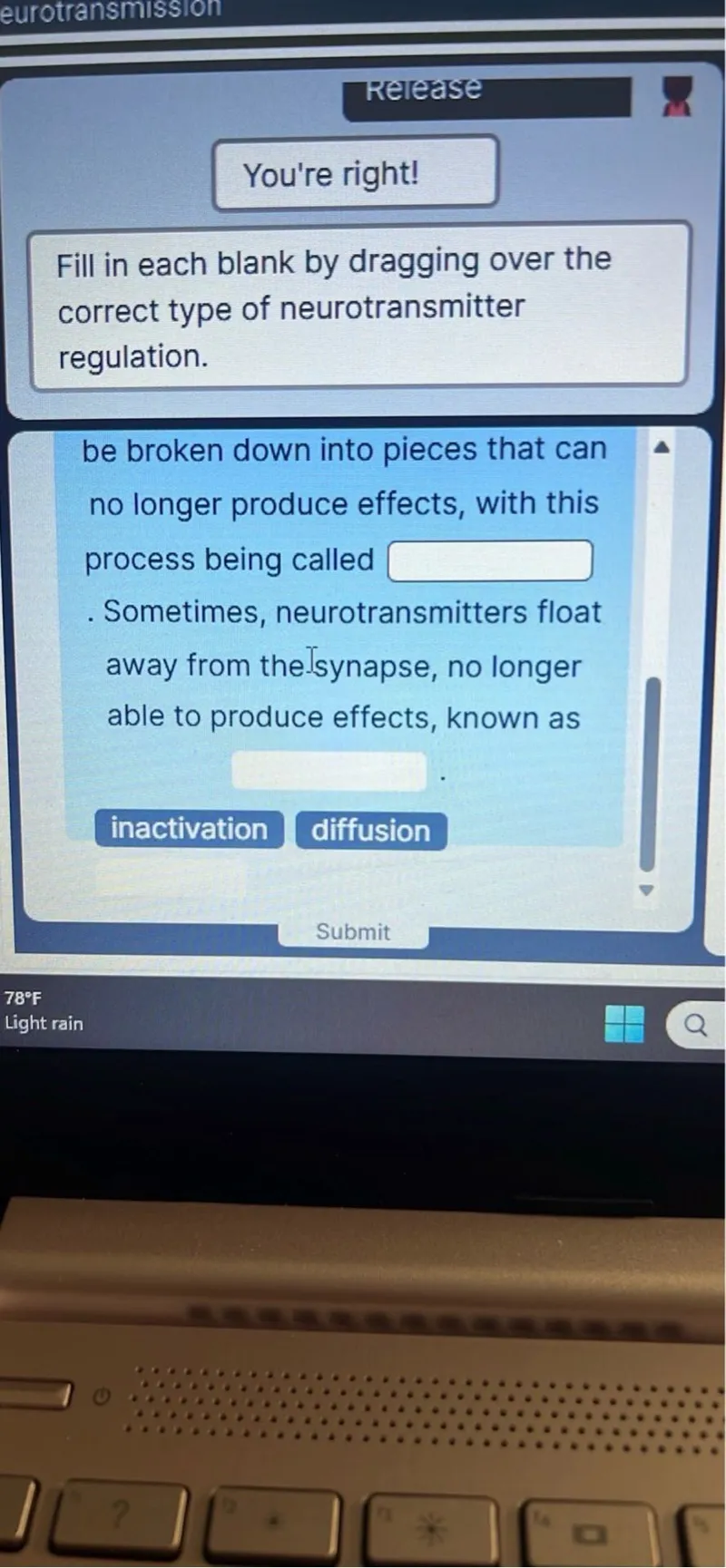Questions: Fill in each blank by dragging over the correct type of neurotransmitter regulation. be broken down into pieces that can no longer produce effects, with this process being called Sometimes, neurotransmitters float away from the synapse, no longer able to produce effects, known as inactivation diffusion

Transcript text: Fill in each blank by dragging over the correct type of neurotransmitter regulation.
be broken down into pieces that can no longer produce effects, with this process being called $\square$
Sometimes, neurotransmitters float away from the. synapse, no longer able to produce effects, known as
$\square$
inactivation
diffusion





